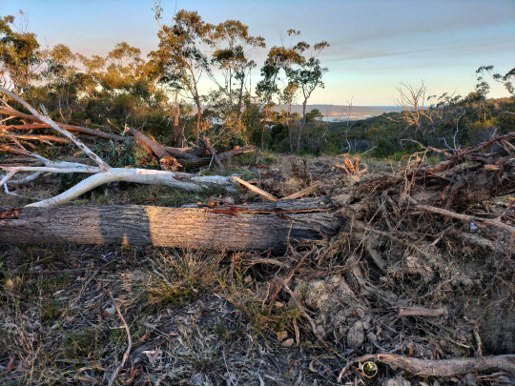Community group Coast Environmental Alliance (CEA) has claimed a significant win for conservation, with the Department of Planning and Environment (DPE) announcing that illegally cleared land at Kariong is to be remediated.
CEA founder Jake Cassar said the group had discovered the illegal clearing by a trespasser of a section of bushland owned by Darkinjung Local Aboriginal Land Council (DLALC) on Woy Woy Rd at Kariong two years ago.
After photographing the damage and meeting with the relevant Government agencies, CEA members have been pushing for the land to be remediated ever since.
“Fines were issued to a man who was found responsible, but until now there had been no moves towards regenerating this extremely ecologically sensitive land,” Cassar said.
“I recently spoke with a representative from the DPE who told me that a remediation order has been placed on the site and that the works would be underway soon.”
A DPE spokesperson confirmed the unlawful clearing resulted in a remediation order for offences under the Biodiversity Conservation Act 2016, which was issued to an individual landowner of property adjacent to the DLALC land.
“The terms of the remediation order, issued in April 2022, relate to removal of rubbish, fencing, mulching of cleared vegetation and weed control,” the spokesperson said.
“No active revegetation was necessary due to the vegetation regenerating naturally.
“Works under the order, delayed due to COVID-19, are expected to commence soon.”
Cassar said the news was a “great win for our voiceless flora and fauna and for those who’ve worked so tirelessly over the past two years to get this result”.
“If we hadn‘t discovered the illegal clearing of around five acres, reported it and continued to follow up, it’s highly likely nothing would have been done to remediate the endangered wetlands and State and Federally listed significant koala habitat,” he said.
The land is part of 13.2 hectares owned by DLALC, with less than half of the total site earmarked for a housing development and the remainder to be retained as bushland.
CEA has been pushing for the land to be reacquired by the Government and included in the national park which surrounds it, ensuring the owners are “duly compensated”.
“The Government clearly acknowledges the sensitivity of the site, zoning the land E2,” Cassar said.
Opponents to the development say the entire sandstone plateau tells an ancient story of how the Aboriginal people lived in harmony with the land and all its inhabitants for tens of thousands of years and should be preserved.

DLALC CEO Brendan Moyle said the illegal clearing was the “most extreme” issue of trespass it had experienced on land it owns on behalf of the Aboriginal community.
“Darkinjung is exploring a range of options with that land, which includes the possible rezoning of some of the Kariong site,” he said.
“The total land mass identified for possible development is 5.7 hectares.
“However, Darkinjung’s draft approaches include preserving the majority of the land (7.5 hectares) for environment conservation purposes, and the protection and preservation of Aboriginal Heritage Information Management System (AHIMS) sites recorded with the NSW Government.
“Any future application will see the zoning of this conservation land from E2 to E3, strengthening environmental protections along the border of the national park.
“Darkinjung and its membership, approximately 750 Aboriginal people who meet the legal definition of being an Aboriginal person, remain committed to responsible development in a way that helps the current community and provides for future generations.
“Our ancestors were the first town planners, farmers, miners, artists and developers, practising these functions for over 65,000 years.
“Darkinjung applies the same ancient lore and values in how we manage our land responsibly to deliver outcomes for the broader community, benefits for the legitimate Aboriginal community which includes the most vulnerable people across the Central Coast, and how we use our collective landholdings of approximately 3,700 hectares to strengthen biodiversity across the Central Coast.”
Terry Collins



